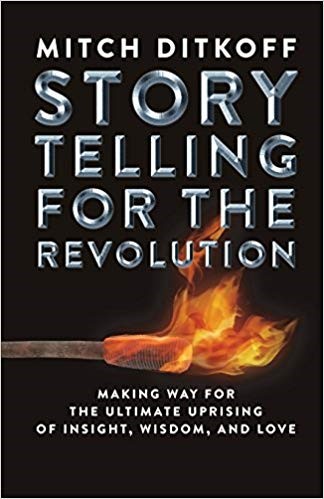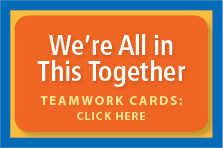10 Ways to Help Left Brainers Tap Into Their Creativity

If your job requires you to lead meetings, brainstorming sessions, or problem solving gatherings of any kind, chances are good that most of the people you come in contact with are left-brain dominant: analytical, logical, linear folks with a passion for results and a huge fear that the meeting you are about to lead will end with a rousing chorus of kumbaya.
Not exactly the kind of mindset conducive to breakthrough thinking.
Do not lose heart, oh facilitators of the creative process. Even if you find yourself in a room full of 10,000 left brainers, there are tons of ways to work with this mindset in service to bringing out the very best of the group's collective genius:
1. Diffuse the fear of ambiguity by continually clarifying the process
Most left-brain-dominant people hate open-ended processes and anything that smacks of ambiguity.
Next time you find yourself leading a creative thinking session, make it a point to give participants, early is the session, a mental map of the process you'll be using. Explain that the session will consist of two key elements: divergent thinking and convergent thinking.
In the divergent segment, you'll be helping people consider non-traditional approaches. In the convergent segment, you'll be helping people analyze, evaluate, and select from the multiplicity of ideas they have generated.
If participants are going to get uneasy, it will happen during the divergent segment. Your task? Periodically remind them of where they are in the process. "Here's our objective," you might say. "Here's where we've been. Here's where we are. And here's we're going. Any questions?"
2. Get people talking about AHAS! they've had
No matter how risk averse or analytical people in your sessions may be, it's likely that all of them -- at some time or another -- have had a really great idea.  "Creativity" really isn't all that foreign to them (although they may think it is). All you need to do to get them in touch with that part of themselves is help them recall a moment when they were operating at a high level of creativity.
"Creativity" really isn't all that foreign to them (although they may think it is). All you need to do to get them in touch with that part of themselves is help them recall a moment when they were operating at a high level of creativity.
Get them talking about how it felt, what were the conditions, and what preceded the breakthrough. You'll be amazed at the stories you'll hear and how willing everyone will be, after that, to really stretch out.
3. Transform limiting assumptions
One of the biggest obstacles to creativity is the assumption-making part of our brain -- the part that is forever drawing lines in the sand -- the part that is ruled by the past. Most people are not aware of the assumptions they have -- in the same way that most drivers are not aware of the blind spot in their mirror.
If you want people to be optimally creative, it is imperative that you find a way to help them identify their limiting assumptions about the challenge they are brainstorming. "Awareness cures," explains psychologist Fritz Perls. But DON'T get caught in a lengthy discussion about the collective limiting assumptions of the group. This is often just another way that left-brain dominant participants will default to analyzing and debating.
Instead, lead a process that will help participants identify and explore their limiting assumptions. Then, time allowing, help them transform each of these limiting assumptions into open-ended "How can we?" questions for brainstorming.
4. Encourage idea fluency
Dr. Linus Pauling, one of the most influential chemists of the 20th century, was once asked, "How do you get a good idea?" His response? "The best way to get a good idea is to get lots of ideas and throw the bad ones away."
That's why "Go for a quantity of ideas" is the first rule of brainstorming. You want to encourage people, early and often, to go for quantity. This will short circuit participants' perfectionistic, self-censoring tendencies -- two behaviors that are certain death to creativity.
5. Invite humor
The right use of is a great way to help people tap into their right brains. Indeed, "haha" and "aha" are closely related. Both are the result of surprise or discontinuity. You laugh when your expectations are confronted in a delightful way.
Please note, however, that your use of humor must not be demeaning to anyone in the room. Freud explained that every "joke" has a victim and is used by the teller to gain advantage over the victim -- a way to affirm power. And when a group finds itself in the realm of power (and the yielding of power), it will undoubtedly end up in left brain territory.
You don't want to feed that beast.
Instead, set the tone by telling a victimless joke or two, or by your own self-deprecating humor. But even more important than "joke telling" is to allow and encourage a free flowing sense of playfulness.

6. Do the right brain/ left brain two-step
Brainstorming for 3, 4 or 5 hours in a row is unusually exhausting, resulting in the "diminishing returns" syndrome. Creative thinking, like life itself, follows natural laws. Day is followed by night, winter by spring, inbreath by outbreath.
That's why the design of your creative thinking session needs to alternate between the cerebral and the kinesthetic -- between brainstorming and some kind of hands-on, experiential activity. By doing this two-step, participants will stay refreshed and engaged.
7. Periodically mention that chaos precedes creative breakthroughs
Left-brained, logical people are rarely comfortable with ambiguity, chaos and the unknown. It seems messy. Disorganized. Downright unprofessional. Indeed, much of the Six Sigma work being done in corporations these days is to reduce variability and increase predictability.
Paradox alert!
If you want to get really creative, you will need to increase variability and help participants get more "out of control." Picasso said it best, "The act of creation is first of all an act of destruction." Tom Peters said it second best, "Innovation is a messy business."
So, when you sense that your session is filled with ambiguity-phobic people, remember to mention how it's normal for ambiguity to precede a creative breakthrough. You may even want to mention how you will be purposefully infusing the session with moments of ambiguity, just to prime the creative pump.
8. Establish criteria for evaluation
The reason why ideas are usually considered a dime a dozen is because most people are unclear about their process for identifying the priceless ones. That's why a lot of brainstorming sessions are frustrating. Tons of possibilities are generated, but there is no clear path for winnowing and choosing.
Let's assume, for example, that the session you facilitate generates 100 powerful, new ideas. Do you have a process for helping participants pare the 100 down to a manageable few? If not, you need one. Ideally, the criteria for selecting ideas will be clarified before the session and introduced to participants early in the session.
Please note that there is some debate amongst brainstorm mavens as to when to offer the criteria. Some say this should happen at the beginning of the session (to help assuage the left brain need for logic and boundaries). Others suggest delaying the identification of criteria until just before the idea evaluation process. Either way will work. Your call.
9. Be a referee when you have to
No matter how many ground rules you mention about "suspending judgment" or "delaying evaluation," you are going to have some heavy hitters in the room just waiting for a moment to doubt your approach or "the process."
Indeed, one of the favorite (often unconscious) strategies of some left-brainers is to debate and question the facilitator every step of the way. While you want to honor their concerns and right to speak their truth, you also want to hold the bar high for the intention behind the brainstorming session -- and that is to challenge the status quo, entertain the new, and create space for imaginations to roam.
Don't be afraid to be firm with participants who want to control the session. At the very least, ask them to suspend their need for "convergence" (i.e. evaluation, judgment, decision making) to the end of the session when there will be plenty of time to exercise that very important muscle.
10. Consult with the tough people on the breaks
Every once in a while, a really opinionated person shows up in a session -- someone who is probably very smart, competent, experienced, with a big BS detector, and just enough arrogance to make you feel uncomfortable. These people can really affect the group, especially if they hold positions of power in the organization.
In the best of all worlds, these people would always be on your side. They won't be. Be careful about playing to these people in a neurotic attempt to get their approval. You won't get it. But DO seek them out on breaks and engage them. Get them talking. Pay attention. See if you can pick up any useful feedback or clues about revising your agenda or approach.
Even though you wouldn't choose to be trapped on a desert island with them, these folks may turn out to be a huge blessing -- because they are carriers of a particular sensibility that needs to be honored. More than likely, some of the other people in the room are feeling the same thing, but have been too polite to show their true colors. So, don't be afraid of these people. They can be a very valuable resource.
Idea Champions
Brainstorming for left-brainers
Right-brain teaching stories
Posted by Mitch Ditkoff at September 28, 2018 10:43 PM
Comments
I�ll have to agree to the previous commenter. *All* my blog articles have their origins on single phrases or ideas that just popped into my head.
I usually have the greatest amount of ideas when trying to fall asleep. Probably because I�m most relaxed at that time. Only if I could somehow record my thoughts without waking up. :)
Posted by: Marble Host ![[TypeKey Profile Page]](http://www.ideachampions.com/weblogs/nav-commenters.gif) at March 18, 2009 01:25 AM
at March 18, 2009 01:25 AM
Just to add on, when you wake up from an interesting dream, quickly write it down at the moment when it�s most vivid.
Some of my best works come from �titles�. Phrases that just popped into my head or in my dreams�
http://www.marblehost.com
Posted by: Marble Host ![[TypeKey Profile Page]](http://www.ideachampions.com/weblogs/nav-commenters.gif) at March 18, 2009 01:27 AM
at March 18, 2009 01:27 AM
This right-brained introvert read this in horror! For me, the date with the muse starts at home in the shower, not on the stage at the local "play party."
The best way to get idea fluency from me is to let me brainstorm ALONE and present the ideas in public. I can engage from there. It overloads the circuits to try to think and respond to social demands and cues and generate original thought at the same time!
Perhaps that is why I'm a writer.
Posted by: www.facebook.com/profile.php?id=783632572 ![[TypeKey Profile Page]](http://www.ideachampions.com/weblogs/nav-commenters.gif) at June 3, 2012 09:07 PM
at June 3, 2012 09:07 PM
Post a comment
Thanks for signing in, . Now you can comment. (sign out)
(If you haven't left a comment here before, you may need to be approved by the site owner before your comment will appear. Until then, it won't appear on the entry. Thanks for waiting.)














